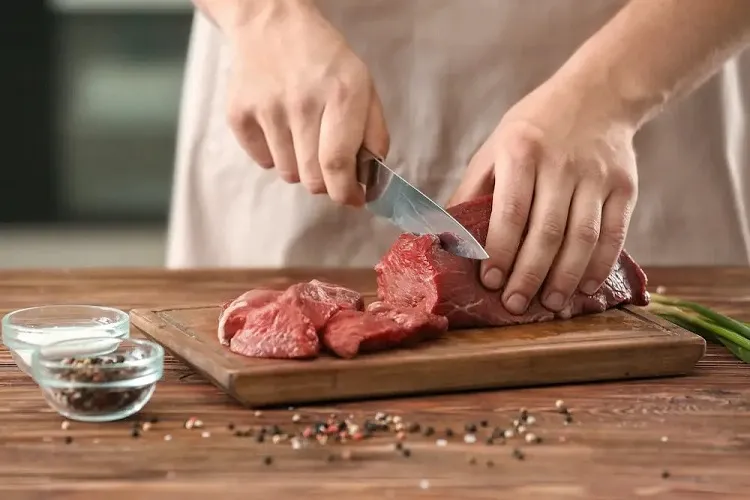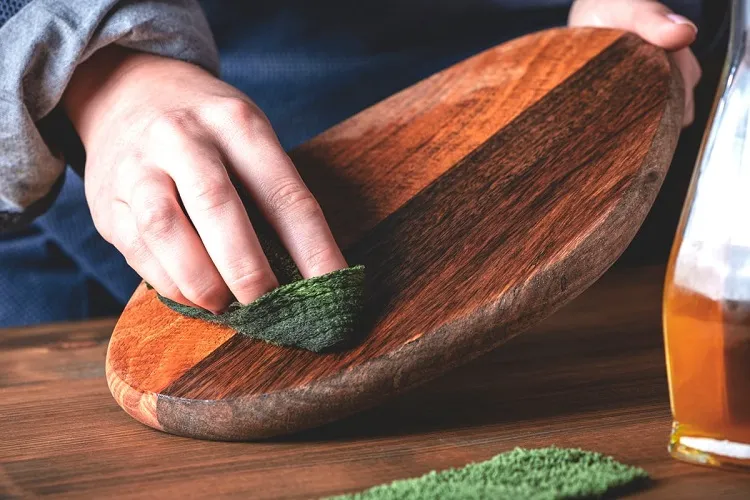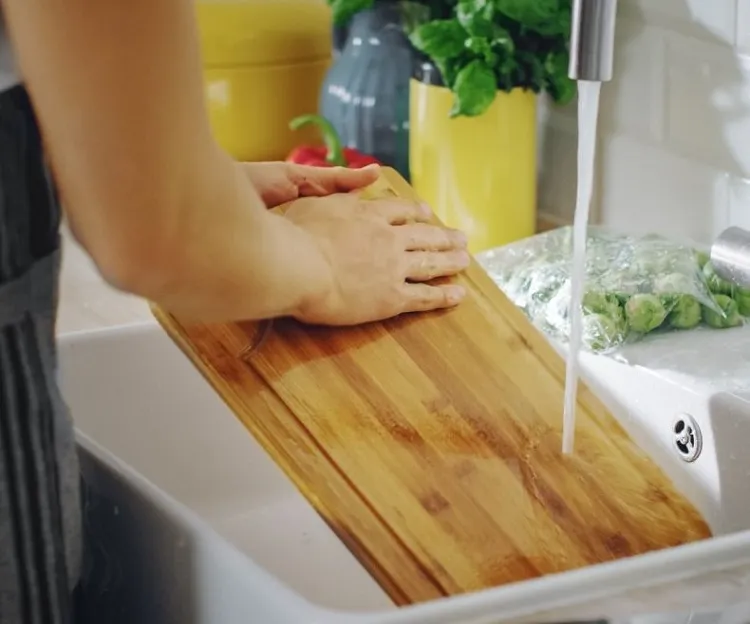Wooden cutting boards can be used for meat preparation before cooking, as far as you are able to adopt stringent sanitization methods to clean them after that. This is needed to prevent proliferation of harmful bacteria on the cutting surfaces and then entering your digestive system. How to clean wooden cutting board after raw meat efficiently, taking in mind the porous and tricky to wash structure of this nature material?
What Happens If You Cut Meat on Wood?
Wooden cutting boards have been a significant element in kitchens for decades, valued for their soundness, aesthetic look, and usefulness. But using this natural material to cut raw meat should be done with care because of the possible risks posed. When this food treatment happens, a complex interaction appears between the porous structure of wood and the microorganisms contained in raw meat. Poultry, beef, and pork can comprise noxious bacteria like Salmonella, E. coli, and Campylobacter. When the meat comes into touch with a wooden surface, these bacteria penetrate into the micropores present in the natural material. This creates suitable conditions for these bacteria to grow and reproduce, which can result in infections and foodborne diseases. Therefore, it’s essential to deep clean wooden cutting board after raw meat.
Should You Use a Wooden Cutting Board for Raw Meat?
Before deciding to use a wooden cutting board for raw meat, think carefully about your health, safety and what hygiene measures to undertake. It’s evident that these kinds of cutting surfaces do have their advantages. They are gentle on knife edges and possess a natural aesthetic look, but they also come with some hazards. It should be noted that not all these cutting surfaces are ideally flat. Hardwood ones, from maple and oak, have firmer grain textures, which are less likely to hold bacteria in comparison to softer materials like pine. But whatever the material is, utilizing individual cutting surfaces for different kinds of food, like one entirely for raw meat and another for vegetables or fruits, can substantially lower the risk of cross-contamination. To reduce the risks in connection with application of dirty cutting surfaces, follow these safeguards how to clean wooden cutting board after raw meat:
- Thorough washing: After each use, entirely clean the cutting board with hot and soapy water. This is enough to remove any remaining bacteria from the surface.
- Sanitization with vinegar: From time to time sanitize the surface with a solution of vinegar with water or compatible with food disinfectant. This step helps to further remove bacteria that may be sticking to the wood’s pores.
- Stop cross-contamination: Just use individual cutting boards for different kinds of food, particularly for raw meat. This stops the transference of microorganisms between foods.
How Do Chefs Clean Wooden Cutting Board after Raw Meat?
Master chefs are well-informed of the importance of keeping clean and free from bacteria, especially when treating raw meat. Their methods often include performing both thorough cleaning and good sanitization to ensure food safety. Here’s how chefs typically clean their natural cutting surfaces:
- Fast cleaning: Chefs clean their cutting boards fast after use, not allowing any bacteria to be stuck to wood. They soak them in hot, soapy water, while scrubbing with a brush to eliminate any meat residue.
- Sanitization with bleach: Skillful chefs practice sanitizing cutting boards with a diluted water-bleach solution or a water-vinegar mixture. The surface is diligently wiped down with the solution and let to air dry.
- Oil application: To keep wooden surfaces in good condition, chefs sometimes apply food-safe mineral oil. This is beneficial in preventing the wood from drying out and cracking, while also creating a barrier, which interferes to the absorption of liquids and bacteria.
- Differentiation of tasks: Chefs practice to separate cutting boards for distinct tasks, like one for raw meats and another for vegetables. This action makes the risk of appearance of contamination minimal.
Also read: How to Oil a Cutting Board from Wood? Instructions & Advice
How to Clean Bamboo Cutting Board After Raw Meat?
Bamboo cutting boards have become popular as they are not only an eco-friendly, but stable solution. Even though they do not have so much pores like hardwood material, they need suitable cleaning and care, particularly when used for cutting raw meat. Follow the few steps to clean them after treating this food:
- Scrape away residue: After you’ve cut the raw meat, take a scraper or spatula, and scrape away any food residue from the bamboo surface.
- Clean with hot water and soap: Wash the bamboo surface with hot, soapy water. Scrub the surface with a brush or towel, till all traces of meat or blood are removed.
- Sanitize the surface: In order to sanitize the bamboo surface, prepare a solution of one to one parts water with white vinegar. Wipe down the surface with this solution and leave it to dry on air.
Read also: 3D wood cutting boards – the cool kitchen helpers




